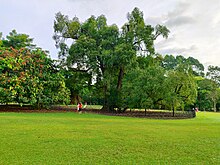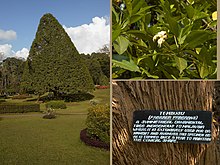J u m p t o c o n t e n t
M a i n m e n u
M a i n m e n u
N a v i g a t i o n
● M a i n p a g e ● C o n t e n t s ● C u r r e n t e v e n t s ● R a n d o m a r t i c l e ● A b o u t W i k i p e d i a ● C o n t a c t u s ● D o n a t e
C o n t r i b u t e
● H e l p ● L e a r n t o e d i t ● C o m m u n i t y p o r t a l ● R e c e n t c h a n g e s ● U p l o a d f i l e
S e a r c h
Search
A p p e a r a n c e
● C r e a t e a c c o u n t ● L o g i n
P e r s o n a l t o o l s
● C r e a t e a c c o u n t ● L o g i n
P a g e s f o r l o g g e d o u t e d i t o r s l e a r n m o r e ● C o n t r i b u t i o n s ● T a l k
( T o p )
1 C o m m o n n a m e s
2 U s e s
3 C u l t u r a l s i g n i f i c a n c e
4 R e f e r e n c e s
5 E x t e r n a l l i n k s
T o g g l e t h e t a b l e o f c o n t e n t s
T e m b u s u
4 l a n g u a g e s
● B a h a s a I n d o n e s i a ● J a w a ● B a h a s a M e l a y u ● T i ế n g V i ệ t
E d i t l i n k s
● A r t i c l e ● T a l k
E n g l i s h
● R e a d ● E d i t ● V i e w h i s t o r y
T o o l s
T o o l s
A c t i o n s
● R e a d ● E d i t ● V i e w h i s t o r y
G e n e r a l
● W h a t l i n k s h e r e ● R e l a t e d c h a n g e s ● U p l o a d f i l e ● S p e c i a l p a g e s ● P e r m a n e n t l i n k ● P a g e i n f o r m a t i o n ● C i t e t h i s p a g e ● G e t s h o r t e n e d U R L ● D o w n l o a d Q R c o d e ● W i k i d a t a i t e m
P r i n t / e x p o r t
● D o w n l o a d a s P D F ● P r i n t a b l e v e r s i o n
I n o t h e r p r o j e c t s
● W i k i s p e c i e s
A p p e a r a n c e
F r o m W i k i p e d i a , t h e f r e e e n c y c l o p e d i a
In the Kandy botanic garden, Sri Lanka
The tembusu is a large evergreen tree in the family Gentianaceae , native to Southeast Asia (from Indo-China to New Guinea ). It is the Malay name for Cyrtophyllum fragransFagraea fragrans[2]
Its trunk is dark brown, with deeply fissured bark , looking somewhat like a bittergourd . The tree grows in an irregular shape from 10 to 25 metres high,[3] Pteropus [4]
Common names [ edit ]
Buabua (Fiji Islands), Urung (Philippines), Temasuk (Sabah), Tatrao, Trai (Vietnam), Kan Krao (Thailand), Tembesu (Indonesia), Anan, Anama (Burma), Munpla (Thailand, Laos), Ta Trao (Cambodia).[citation needed
The trunk of this tree can produce very hard wood that can be used to make chopping boards and floors.[citation needed The wood can last over a hundred years, as it is not consumed by termites and weevils .
Cultural significance [ edit ]
The tree is pictured on the Singaporean five-dollar bill .[citation needed
In Thailand , it is the provincial tree of Surin Province and the university tree of Ubonratchathani .[citation needed
References [ edit ]
^ Tropical plants site description
^ Hargreaves, Dorothy; Hargreaves, Bob (1970). Tropical Trees of the Pacific 61
External links [ edit ]
Cyrtophyllum fragrans
Fagraea fragrans
R e t r i e v e d f r o m " https://en.wikipedia.org/w/index.php?title=Tembusu&oldid=1205794213 " C a t e g o r i e s : ● I U C N R e d L i s t l e a s t c o n c e r n s p e c i e s ● F a g r a e a ● T r e e s o f I n d o - C h i n a H i d d e n c a t e g o r i e s : ● C i t e I U C N w i t h o u t d o i ● A r t i c l e s w i t h s h o r t d e s c r i p t i o n ● S h o r t d e s c r i p t i o n i s d i f f e r e n t f r o m W i k i d a t a ● A r t i c l e s w i t h ' s p e c i e s ' m i c r o f o r m a t s ● A l l a r t i c l e s w i t h u n s o u r c e d s t a t e m e n t s ● A r t i c l e s w i t h u n s o u r c e d s t a t e m e n t s f r o m J u n e 2 0 2 3 ● C o m m o n s c a t e g o r y l i n k i s l o c a l l y d e f i n e d ● T a x o n b a r s w i t h m u l t i p l e m a n u a l W i k i d a t a i t e m s
● T h i s p a g e w a s l a s t e d i t e d o n 1 0 F e b r u a r y 2 0 2 4 , a t 1 2 : 2 8 ( U T C ) . ● T e x t i s a v a i l a b l e u n d e r t h e C r e a t i v e C o m m o n s A t t r i b u t i o n - S h a r e A l i k e L i c e n s e 4 . 0 ;
a d d i t i o n a l t e r m s m a y a p p l y . B y u s i n g t h i s s i t e , y o u a g r e e t o t h e T e r m s o f U s e a n d P r i v a c y P o l i c y . W i k i p e d i a ® i s a r e g i s t e r e d t r a d e m a r k o f t h e W i k i m e d i a F o u n d a t i o n , I n c . , a n o n - p r o f i t o r g a n i z a t i o n . ● P r i v a c y p o l i c y ● A b o u t W i k i p e d i a ● D i s c l a i m e r s ● C o n t a c t W i k i p e d i a ● C o d e o f C o n d u c t ● D e v e l o p e r s ● S t a t i s t i c s ● C o o k i e s t a t e m e n t ● M o b i l e v i e w



